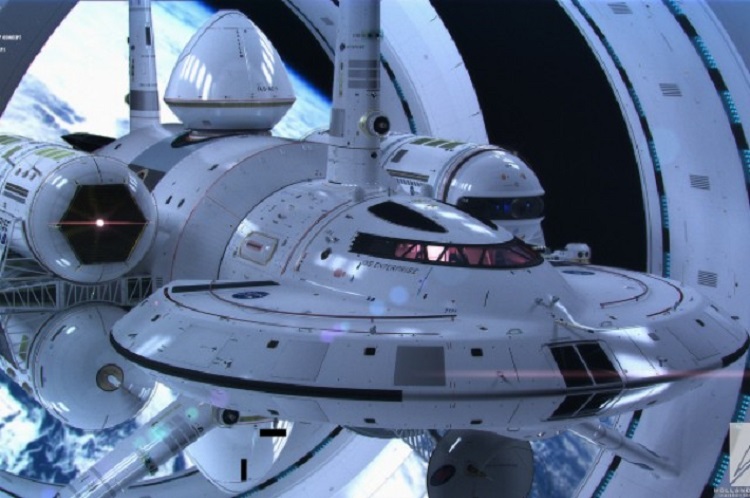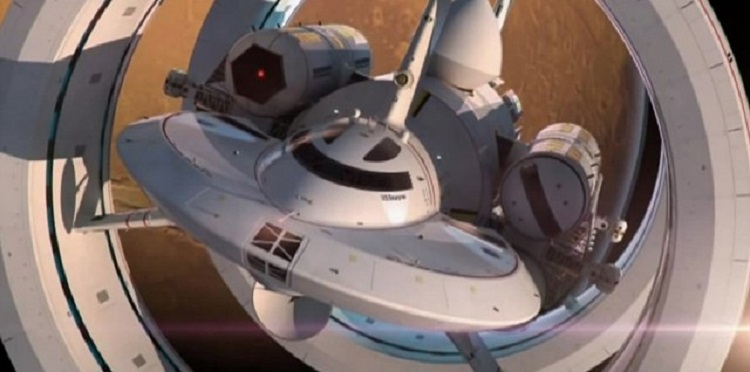
The picture depicted above is not some secret NASA project built in the recesses of the dark side of the moon, but the brainchild of concept artist Mark Rademaker, who designed what could be the first theoretical spacecraft to incorporate warp-drive technology. Rademaker’s inspiration comes from the research of Harold White, hot shot scientist and Team Lead of NASA’s Advanced Propulsion division at the Johnson Space Center; In other words, White is responsible for determining the plausibility of faster-than-light warp speed and how to achieve it (if it’s possible).
Even with experimental propulsion technology such as ion thrusters and nuclear propulsion, it would still take a few decades to reach a solar system outside of our own, let alone an enormous amount of fuel. Considering Einstein’s theory of relativity dictates that nothing can surpass the speed of light, the only possible solution must be warping time and space to create a loophole in the laws of physics.

IXS Enterprise’s design abides by principles of White’s research
“Perhaps a Star Trek experience within our lifetime is not such a remote possibility,” said White. Working together, the pair envisioned a ship based on Matt Jeffries’ design of the original Star Trek 's Starship Enterprise. This new design, un-ironically called Enterprise, is a much more appropriate match for the mathematics behind the Alcubierre warp-drive, a theory proposed by physicist Miguel Alcubierre in 1994, suggesting a method which will allow a spacecraft to achieve faster-than-light travel while adhering to Einstein’s theory of relatively.
Alcubierre's theory
Without getting into the mathematics, Alcubierre’s theory proposes that a spacecraft can travel massive distances by creating a warp bubble that compresses the space in the front of the vessel while simultaneously expanding the space behind it. This would cause space-time to move around the ship and reposition it further along the space-time course without actually moving it. “Remember, nothing locally exceeds the speed of light, but space can expand and contract at any speed,” White told io9.
Dr. White states that, “by harnessing the physics of cosmic inflation, future spaceships crafted to satisfy the laws of these mathematical equations may actually be able to get somewhere unthinkably fast—and without adverse effects.”
White’s research
White is overseeing an experiment involving a modified Michaelson-Morele interferometer that allows the measurement of an actual warp bubble on the nano-scale. ”We're attempting to make one of the legs of the interferometer appear to be a different length when we energize our test devices.” So far, the results remain inconclusive, but a minor, albeit significant detail did emerge: a non-zero effect was observed.

More data will be needed before an actual warp bubble is observed in the “the real world,” as White puts it, but the mathematical modeling has been refined since Alcubierre's 1994 paper, disproving the possibility of accidentally triggering a star system-destroying event a la black hole. Nevertheless, the implication of a warp bubble that permits even fractional faster-than-light speed travel is colossal, putting our entire solar system within reach. The creation of a functional warp-drive will propel our species exponentially forward, in much the same way that the discovery of fire and invention of wheel did.
Via Extremetech
Advertisement
Learn more about Electronic Products Magazine





